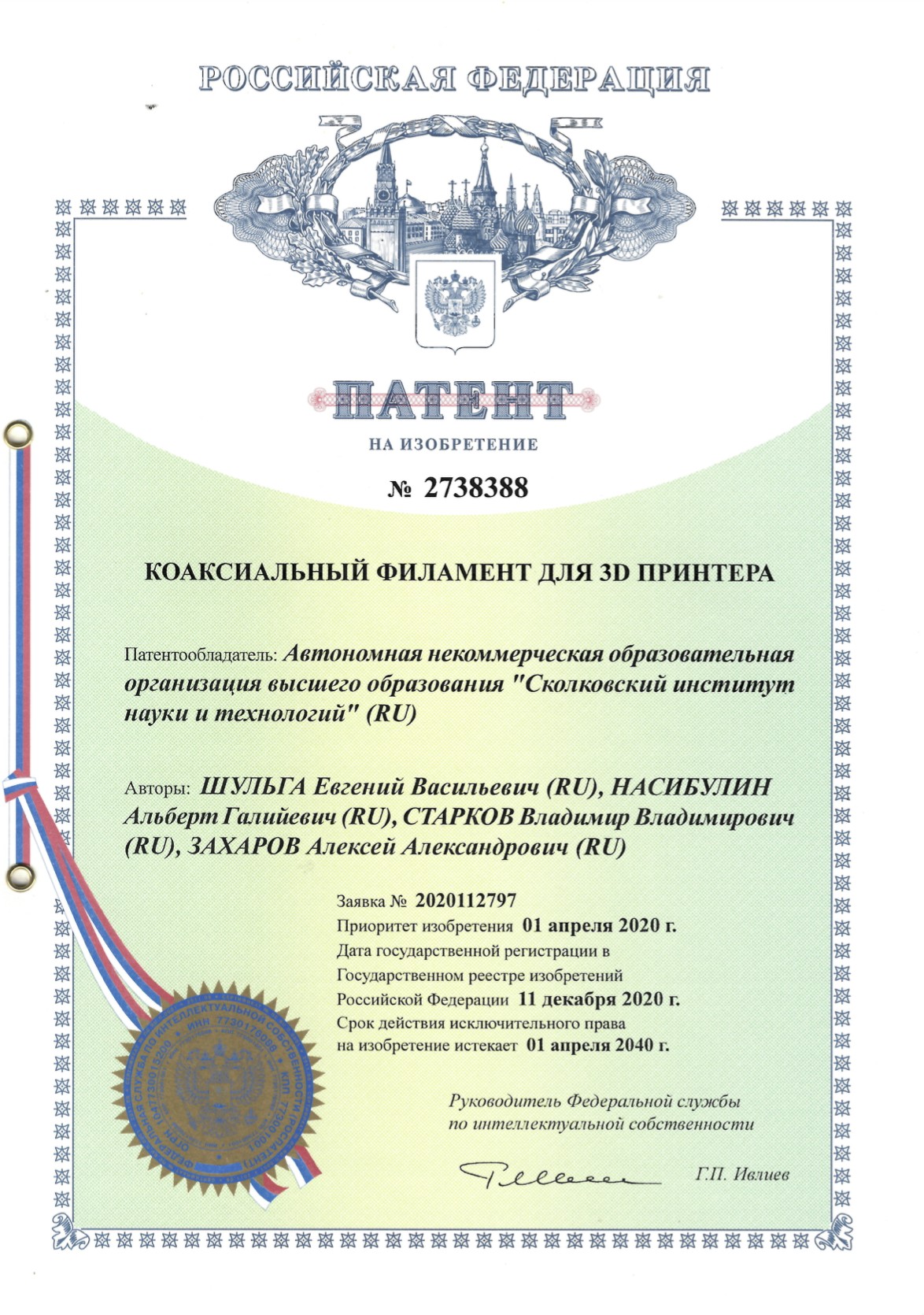A team of Skoltech researchers has been granted a patent for a kind of strong constructional composite filament for Fused layer Deposition Modelling (FDM) 3D printers. FDM is the most common type of additive manufacturing technology, and the invention will help make stronger printed parts on conventional tabletop 3D printers.
Research Scientist Eugene Shulga, Professor and Head of Laboratory of Nanomaterials Albert Nasibulin, Andrey Starkov and Alexey Zakharov have designed a filament which consists of at least two concentric layers of thermoplastic polymers, with the inner layer (core) of the filament consisting of composite reinforced with short fibers and an outer layer (sheath) of polymer with graphene.
This structure allows combining different properties of the composite materials. The core material gives the mechanical strength and low heat shrinkage to the material and a sheath significantly reduces abrasiveness of the short fibers, which lessens the wear of the 3D printer parts, and contributes to the stiffness and the impact resistance of the printed part.
This can solve some of the more common problems with 3D printing filaments, which are either inferior in their properties or prohibitively expensive for most users. It allows using less expensive, but more abrasive glass fibers instead of carbon fibers, and since only the outer sheath layer contains graphene and its derivatives with just a fraction of the total mass, it helps maintain the total price at a reasonable level.
The technology of making a coaxial filament can be applied to various thermoplastic polymers (including high-temperature ones, such as PEEK). Using other types of additives could bring enhanced stiffness and impact resistance, moisture protection, anti-static properties, biocompatibility, etc.
“We got funding in the framework of Skoltech Translational Research and Innovation Program (STRIP) to develop the fiber with an idea to produce an expensive product for the price of cheap polymers. As a result of the development, we created a startup company Novaprint 3D, which is commercializing the scientific results obtained during the funding period,” Shulga said.
“This material is primarily suitable for printing tooling and fastener parts, as well as functional prototypes and finished product parts for applications in the auto, motorcycle and bicycle industry, exoskeletons, orthoses and prostheses, robotics, etc,” Professor Nasibulin added.
Dear partners, if you are interested in any of Skoltech’s technologies, our Knowledge Transfer Office will be glad to consult you on licensing and technology transfer opportunities for your business. Here is Skoltech’s Portfolio of intellectual property (Rus). For further details, please feel free to contact the .
Contact information:
Skoltech Communications
+7 (495) 280 14 81

